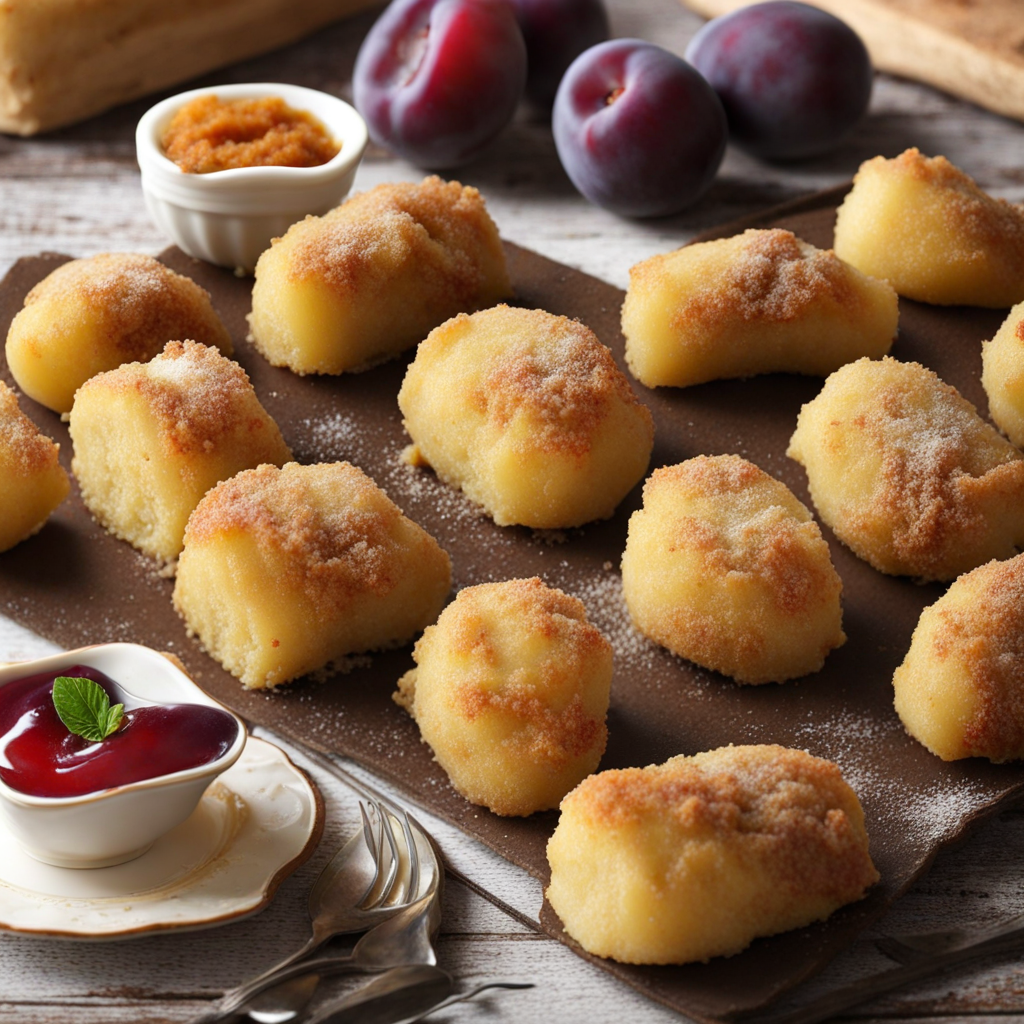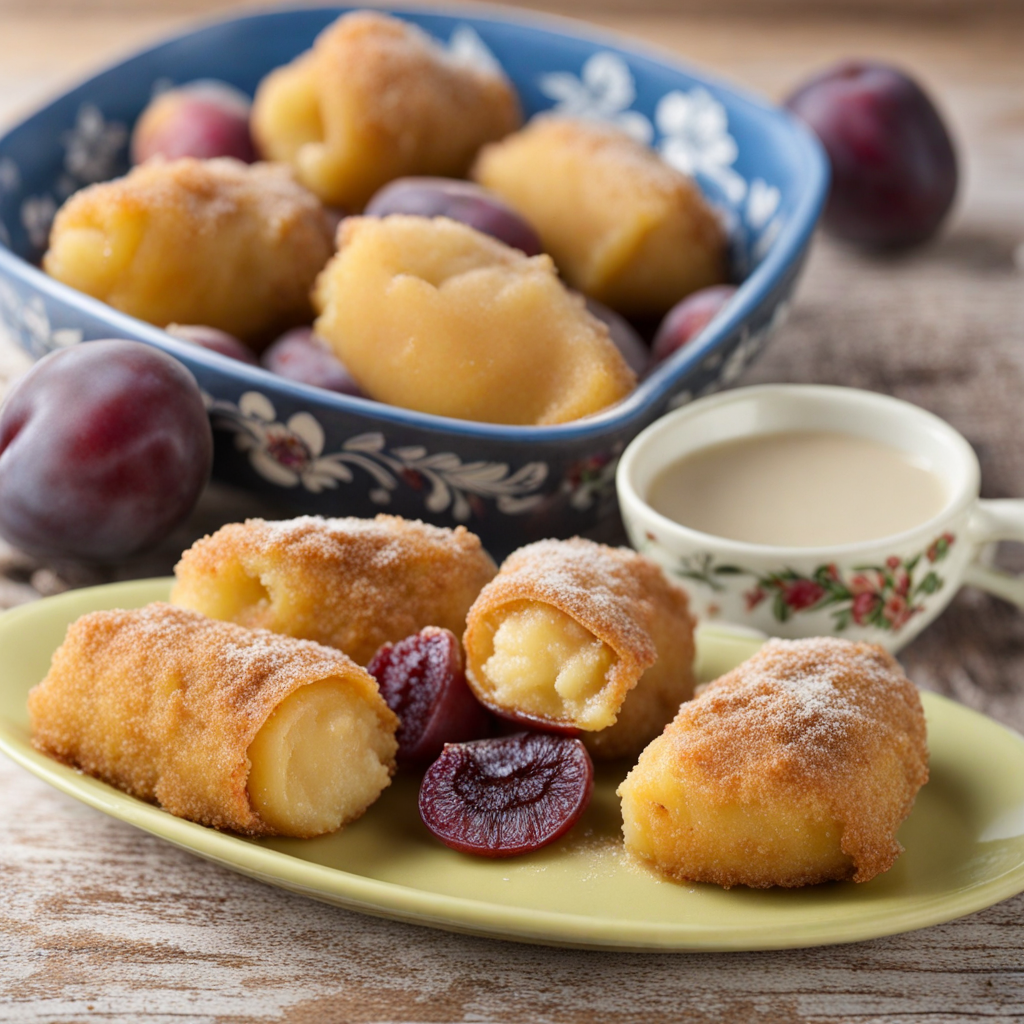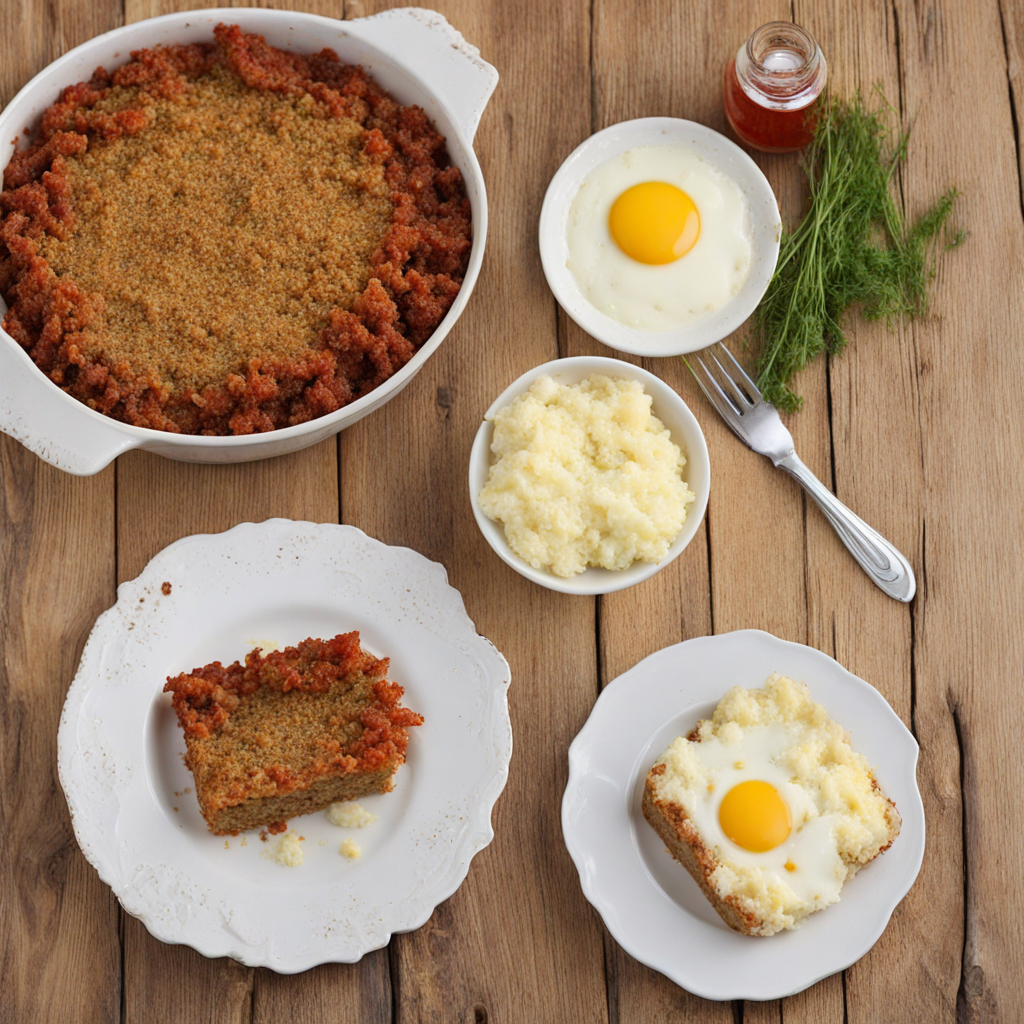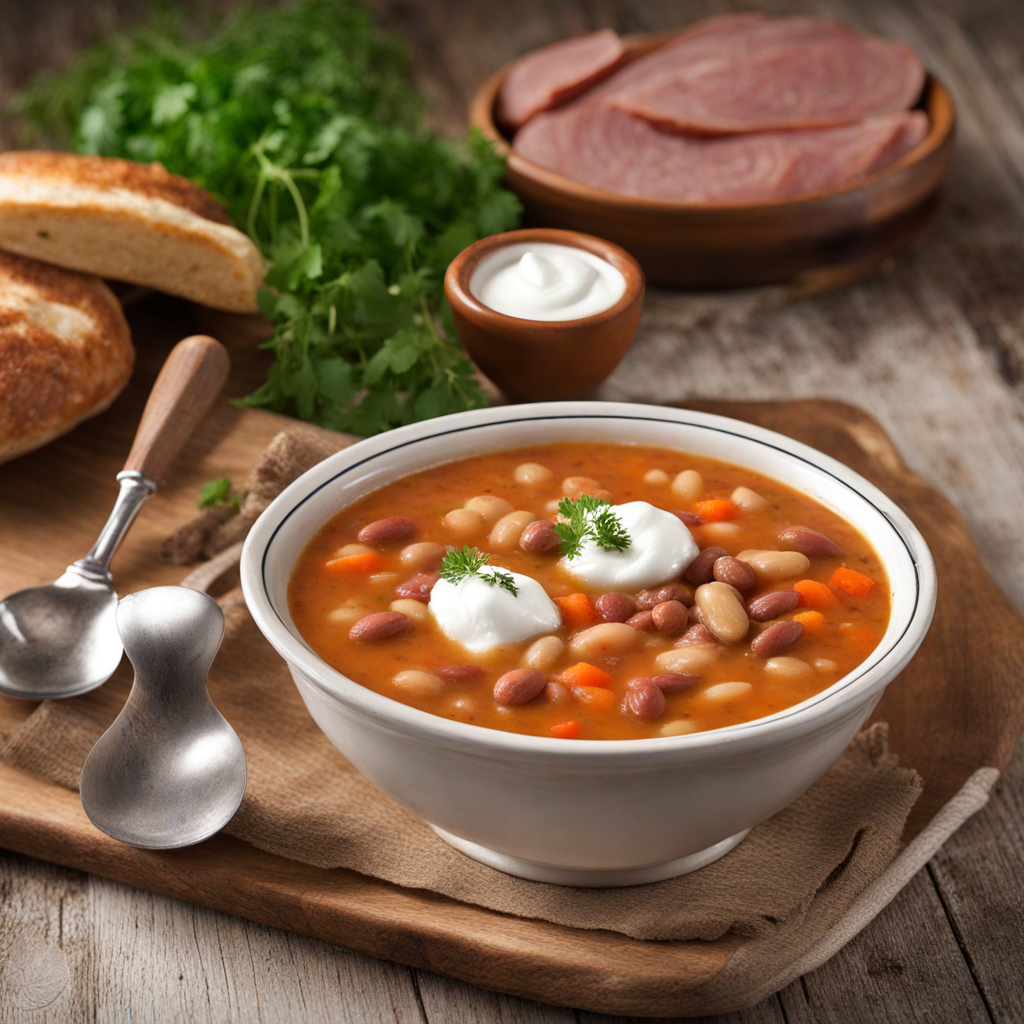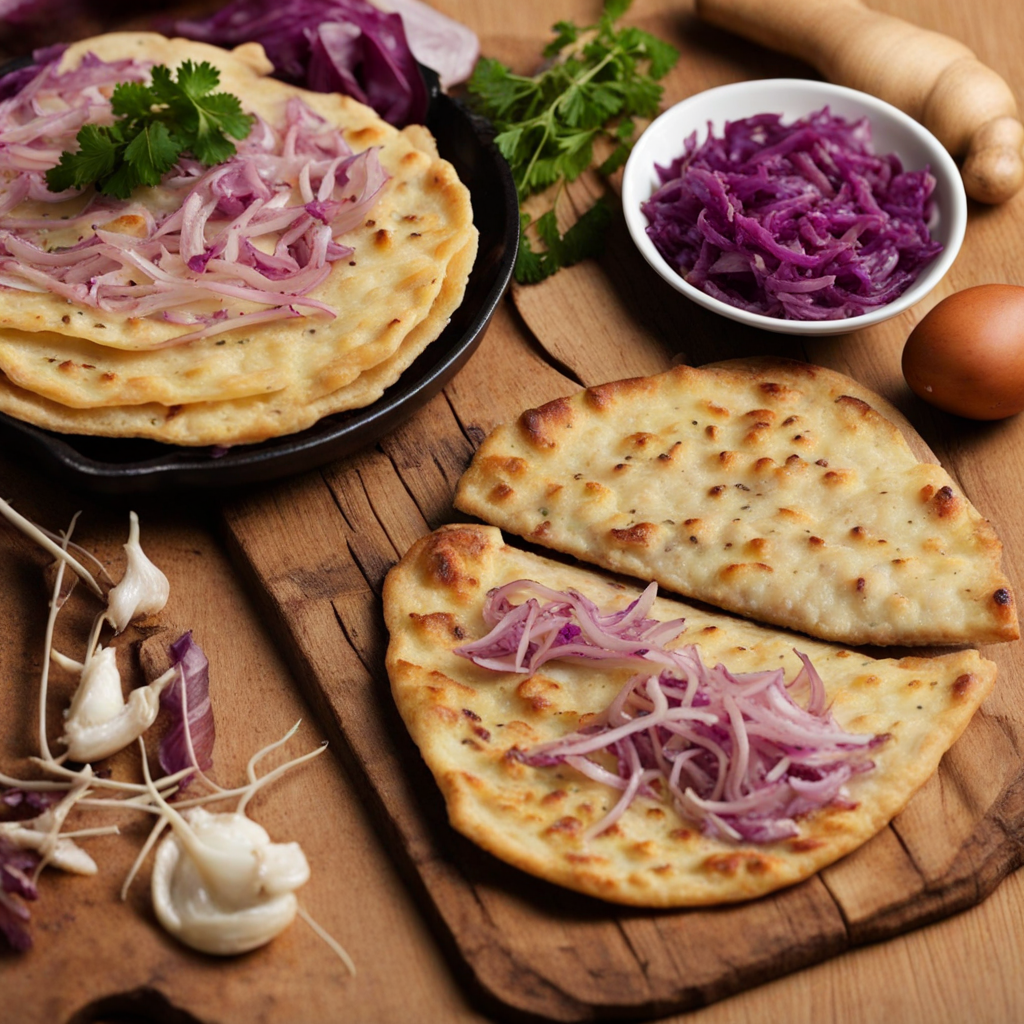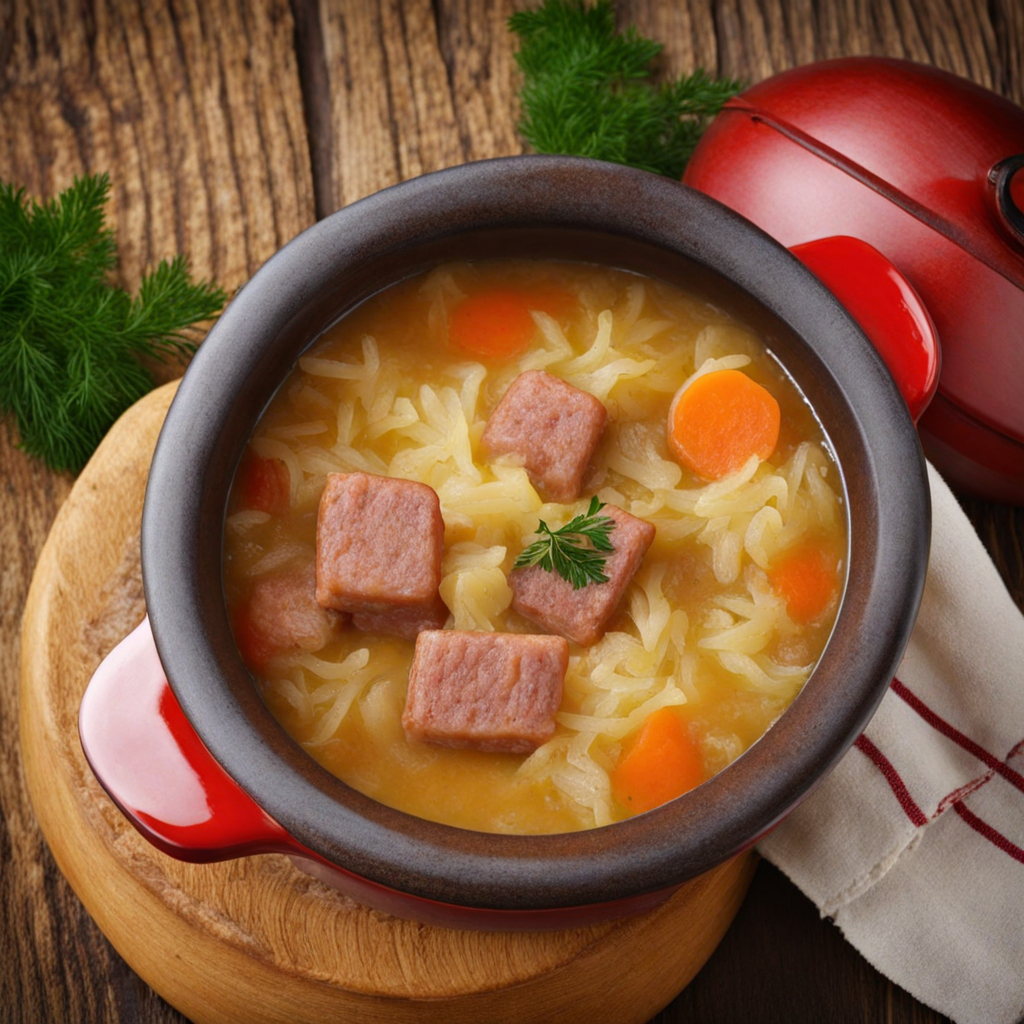Slivkové Gule
Slivkové Gule, or Slovak plum dumplings, are a delightful culinary treasure that showcases the rich flavors of Slovakia. These dumplings are typically made from a soft potato dough that envelops sweet, ripe plums. The dough is crafted from boiled potatoes and flour, resulting in a tender yet slightly chewy texture that perfectly complements the juicy fruit inside. When cooked, the plums become irresistibly sweet, releasing their natural juices that mingle with the dough, creating a harmonious blend of flavors that is both comforting and indulgent. Once the dumplings are boiled to perfection, they are often rolled in a generous coating of melted butter and sprinkled with a mixture of breadcrumbs and sugar, adding a delightful crunch and caramelized sweetness. This finishing touch elevates the dish, making it not just a main course but a comforting dessert as well. Some variations may include a sprinkle of ground poppy seeds or cinnamon, offering an aromatic twist that enhances the overall experience. The contrast between the warm, pillowy dumplings and the fruity, syrupy filling is nothing short of heavenly. Slivkové Gule is often enjoyed as a traditional dish during special occasions and family gatherings, embodying the heart and soul of Slovak cuisine. They are typically served warm, and can be accompanied by a dollop of sour cream or a scoop of vanilla ice cream for an extra layer of decadence. Each bite reveals the rich cultural heritage of Slovakia, inviting food lovers to explore the delightful simplicity and profound flavors of this beloved dish.
How It Became This Dish
Slivkové Gule: A Delicious Journey Through Slovak History Origin and Ingredients Slivkové gule, or Slovak plum dumplings, are a cherished traditional dish that embodies the heart of Slovak culinary heritage. The name translates directly to "plum balls," which aptly describes these delightful treats made primarily from dough and plums. The dish is a perfect representation of the Slovakian landscape, where plums flourish in abundance, especially in regions like the East Slovak Lowland. The key ingredients for slivkové gule are simple yet vital: ripe plums, typically the small, sweet varieties such as the 'presnicky' or 'trnky,' and a dough that is often made from potatoes or flour. The potato-based dough is particularly popular, known for its pillowy texture that complements the juicy, tart plums inside. The dumplings are usually boiled and are often served with a dusting of sugar and a sprinkle of poppy seeds or grated cheese, enhancing their flavor and visual appeal. Cultural Significance Slivkové gule is more than just a dish; it is a symbol of Slovak culture and tradition. The preparation and enjoyment of these dumplings often bring families together, especially during the harvest season when plums are ripe for picking. This communal aspect of cooking reflects the broader Slovak values of family and togetherness, where meals are an essential part of social life. The dish is also linked to regional festivals and celebrations. In many Slovak villages, plum festivals (known as "slivkový festival") are organized to celebrate the harvest, where slivkové gule is a highlight. These festivals not only showcase the local produce but also serve as a platform for the community to come together, participate in traditional music and dance, and enjoy local cuisine. Moreover, slivkové gule has become a culinary ambassador for Slovakia. As Slovak immigrants settled in different parts of the world, they carried with them their culinary traditions. Slivkové gule has found its way to Slovak-American communities, where it is often prepared during family gatherings and holidays, thus preserving a piece of their heritage. Historical Development The origins of slivkové gule can be traced back to the 19th century, during a time when home cooking was a necessity for survival. The abundance of plums in the fertile valleys of Slovakia led to creative adaptations in cooking. Dumplings were a staple in many Eastern European cuisines, often made with various fillings, but the Slovak version uniquely emphasizes local produce, particularly plums. In the early 20th century, as Slovak society evolved, so too did the culinary landscape. The establishment of the Czechoslovak Republic in 1918 brought about a sense of national identity, and with it, a renewed interest in folk traditions, including food. Slivkové gule gained popularity not just as a local dish but as a representation of Slovak identity. Cookbooks began to document traditional recipes, ensuring that the preparation of slivkové gule was passed down through generations. Post-World War II, Slovakia underwent significant political and social changes that affected its culinary practices. The communist regime promoted a more standardized approach to food production and consumption. However, traditional foods like slivkové gule managed to endure as a symbol of resistance against cultural homogenization. Families continued to make these dumplings from scratch, using their beloved family recipes, thus keeping the tradition alive. In the late 20th century, the fall of communism in 1989 and the subsequent independence of Slovakia in 1993 heralded a new era for Slovak culture. There was a resurgence of interest in traditional foods as a means of celebrating national identity. Slivkové gule began to reappear in restaurants and culinary festivals, with chefs experimenting with new variations while respecting the authenticity of the traditional recipe. Modern Interpretations and Global Influence In contemporary Slovakia, slivkové gule can be found in various forms. While the traditional potato dough version remains popular, modern chefs often explore new dimensions of the dish. Some might incorporate alternative flours, such as spelt or whole wheat, catering to the growing interest in health-conscious eating. Others experiment with different fillings, introducing ingredients like chocolate or nuts alongside the classic plum, appealing to a broader audience. Moreover, the globalization of food culture has led to a fusion of flavors and techniques. Slovak restaurants abroad, especially in areas with significant Slovak populations, have adapted slivkové gule to cater to diverse palates. This has included incorporating international ingredients, or presenting the dish in new formats, such as desserts or appetizers, showcasing the versatility of the dumpling. Social media has also played a significant role in the revival and promotion of slivkové gule. Food bloggers and influencers highlight traditional Slovak recipes, often sharing their own family stories alongside the preparation of slivkové gule. This digital platform has allowed younger generations to connect with their heritage, inspiring them to cook and share their versions of these beloved dumplings. Conclusion Slivkové gule stands as a testament to the rich tapestry of Slovak history, culture, and culinary tradition. From its humble beginnings rooted in local agriculture to its modern interpretations in kitchens around the world, this dish encapsulates the essence of Slovak identity. As the world becomes increasingly globalized, slivkové gule serves as a delicious reminder of the importance of preserving cultural heritage through food. Whether enjoyed at a family gathering, a local festival, or in a restaurant far from Slovakia, these plum dumplings continue to bring people together, celebrating the timeless connection between food, culture, and community.
You may like
Discover local flavors from Slovakia


